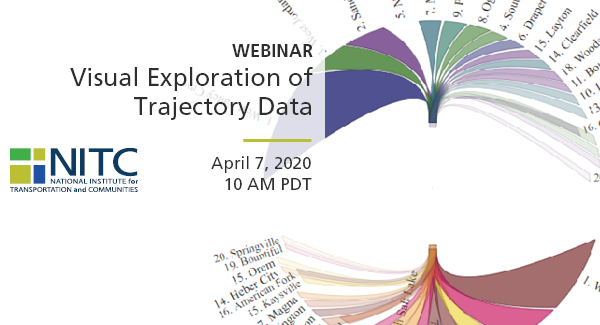The video begins at 3:45.
Watch video
View slides
New FHWA VMT Forecasts and Implications for Local Planning
or
Post-Apocalyptic Zombies Ate Oregon’s Post-Recession, ATR Regression
Where: Room 204 of the Distance Learning Center Wing of the Urban Center at PSU
A summary of FHWA’s new national traffic trends assessment will be presented, including discussion of varied factors influencing forward-thinking forecasts. Examples of Oregon statewide vehicle miles travelled (VMT) and historic traffic trends from ATR stations in the Portland urban region and greater Willamette Valley will be highlighted. VMT, population and income data will be noted with implications on local transportation planning.
Andrew is an associate with David Evans & Associates, Inc., with over 28 years of experience in multimodal transportation planning with emphasis on sustainable community and Complete Street policy and plan development. He focuses on developing multimodal transportation plans with context-sensitive street standards and policies that implement enhanced bicycle and pedestrian use and circulation. His area of expertise includes measured pedestrian-access-to-transit connectivity, the implementation of...
Read moreView slides
If you would like to receive continuing education credits such as PDH or CM, please make sure to complete this evaluation form once you've watched the entire video so that we have a record of your attendance.
Watch video:
Read morePRESENTATION ARCHIVE
OVERVIEW
This webinar will demonstrate the tremendous value of GPS trajectory data in understanding statewide travel patterns and measuring performance. First, Dr. Markovic (U of Utah) will conduct visual exploration of GPS trajectories that capture about 3% of all the trips in Utah. He will briefly discuss the problem of scaling GPS trajectories to the population, and then focus on the use of scaled trajectories in computing origin-destination matrices, vehicle-hours delays, vehicle-miles traveled, and trip-based performance measures. Second, Dr. Franz (CATT Lab) will demonstrate a suite of visual analytics that enables transportation agencies to easily explore terabytes of GPS trajectory data. He will demonstrate different tools and share the experience of 5 state DOTs that are currently using CATT Lab's trajectory data suite.
KEY LEARNING OUTCOMES
- Trajectory data represents the most complete vehicle-probe data and provides unprecedented opportunity for transportation system analysis.
- Transportation agencies can easily leverage visual analytics to obtain insights in statewide traffic patterns and...
Watch video
View slides
Transportation and Road Weather
Where: Room 204 of the Distance Learning Center Wing of the Urban Center at PSU
Speaker: Rhonda Young, University of Wyoming
Topic: Transportation and Road Weather
Summary: Weather has a tremendous impact on the transportation system and is one of the largest contributors to non-recurring delay and increased crashes. Road weather is the a multidisciplinary area involving transportation engineers and meteorologists who are working to mitigate the negative effects of weather on the operation and maintenance practices of transportation systems. The talk covers the broad types of issues being studied in this field and looks at ways in which technology is playing a large part in the proposed solutions. The issue of weather as a complicating factor in the use of connected and autonomous vehicle technologies is also discussed.
Bio: Rhonda Young is an associate professor in the Department of Civil and Architectural Engineering at the University of Wyoming since 2002 and teaches graduate and undergraduate classes in Traffic Operations, Transportation Planning, Transportation Design and Traffic Safety. She completed her master and PhD degrees in Civil Engineering at the University of Washington and...
Read moreThe video begins at 2:15.
View slides
Abstract: TriMet has used a computer aided dispatch (CAD)/automatic vehicle location (AVL) system to manage bus and rail operations since the late 1990s. TriMet is currently in the process of updating the CAD/AVL system, and anticipates improvements in bus tracking and performance monitoring. This presentation will show how TriMet uses data from the system to support intelligent transportation systems (ITS) such as TransitTracker and automatic stop announcements in buses and trains, as well as to analyze transit operations such as on time performance and passenger loads.
Speaker Bios: Steve Callas is the Manager of Service and Performance Analysis at TriMet in Portland Oregon, where he is responsible for operations performance monitoring and analysis. This includes analyzing TriMet’s comprehensive automatic vehicle location and automatic passenger counter data archive. Additionally, Steve is involved in various transit operations research projection in conjunction with Portland State University and OTREC. Steve has been with TriMet for over 15 years.
David is an operations analyst with TriMet. He is involved in AVL data mining and analysis, safety analysis, automatic stop announcements, transit signal priority, and real-time...
Read moreView slides
Watch video:
New technologies such as smart phones and web applications constantly collect data on individuals' trip-making and travel patterns. Efforts at using these "Big data" products, to date, have focused on using them to expand or inform traditional travel demand modeling frameworks; however, it is worth considering if a new framework built to maximize the strengths of big data would be more useful to policy makers and planners.
In this presentation Greg Macfarlane will present a...
Read moreWatch video
View slides
Summary: Researchers from the transportation, planning and health fields share the common goal of promoting physically active lifestyle. One challenge that researchers often face is the measurement of physical activity, particularly among children. This is because the sporadic nature of children’s physical activity patterns makes it difficult to recall and quantify such activities. Additionally, children’s lower cognitive functioning compared to adults prevents them from accurately recalling their activities. This presentation will describe the design and application of a novel self-report instrument - the Graphs for Recalling Activity Time (GReAT) - for measuring children’s activity time use patterns. The instrument was applied in a study of children’s risk for obesity and diabetes in a predominately Hispanic community in Milwaukee, WI. Time-use data for two weekdays and one weekend day were collected for various physical and sedentary activities. The data was then assessed against measurements of the children’s cardiovascular fitness, weight status and insulin resistance through exploratory analysis and structured equation modeling. Findings on GReAT’s reliability and new evidence on the impacts of time-use in different activities on children’s risk for...
Read more

